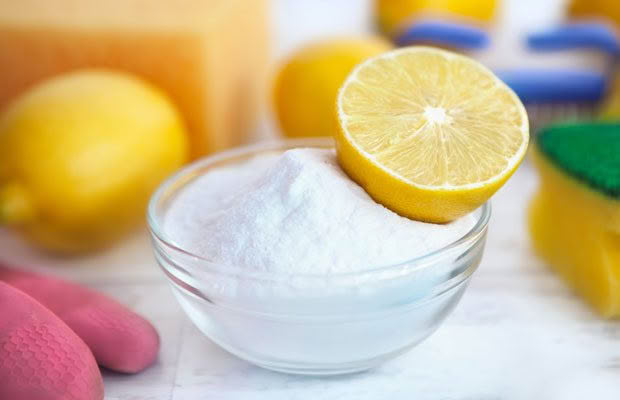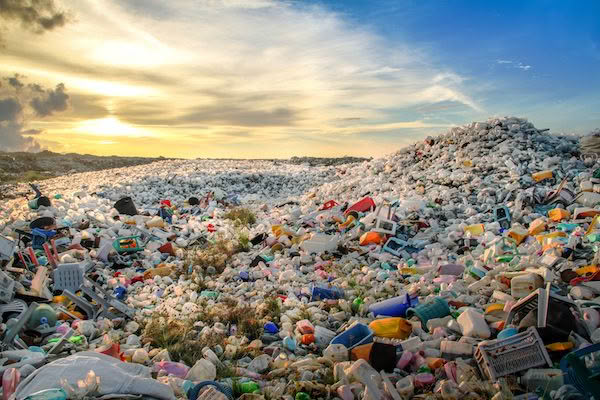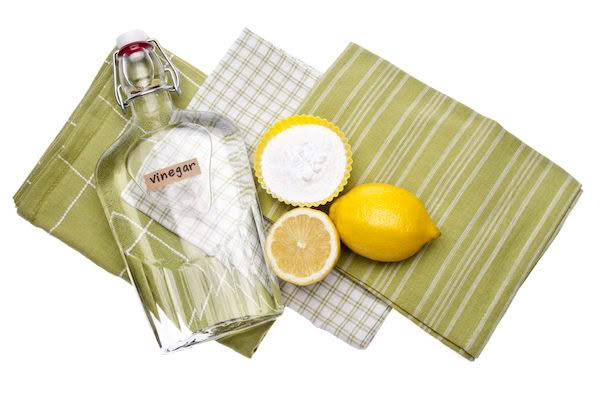Reduce your plastic consumption and make your own natural cleaning products

These tips will help you to reduce the amount of packaging you use, and get you into DIY cleaning products.
Words: Nadene Hall
Should you recycle, re-use or refuse?
There’s an outer layer of plastic wrapping, covered in enticing imagery and colourful writing. Then there’s an inner bag. Then there is a plastic tray. Finally, you can eat your cookie.
The amount of packaging we deal with every has exploded, and there are three philosophies on what to do with it.

Recycling is your first option. You can re-use many things, or you can choose not to buy products that use wasteful amounts of (or any) packaging in the first place.
HOW TO RE-USE RUBBISH
Plastic bottles can be re-used for all sorts of things. Suggestions include
— cut up plastic bottles into squares and use as name tags for vegetables, trees and bags
— cut the end off a bottle at an angle and use it as a scoop
— cut out the side, hang it from a tree and use it as a bird feeder
— cut milk containers in half and use them to grow seedlings
— use larger plastic containers to hold toys, crayons, lego blocks etc
— cut the top off drink bottles and use them as vases
— fizzy drink bottles make great protective coverings for young seedlings during early spring.
However, eventually you will end up with plastic coming out your ears, so what then?
BUY LESS PACKAGING
Use natural ingredients to reduce the amount of cleaning products you buy. This is where being more sustainable means making different shopping choices and/or choosing to use DIY products. However, with that choice, you lose some of the convenience of pre-packaged goods.

For example, you could bake all your own biscuits and slices, saving yourself from buying a lot of layers of plastic packaging. You could make your own preserves, spaghetti or baked beans and give up having to buy canned ones, and re-use the jars each year.
If you do buy packaged products, choose ones that are packaged in cardboard or paper (compostable) or glass (if you want to take it to be recycled).
OTHER WAYS TO AVOID BUYING PLASTIC
1. Don’t buy multi-packs of products, eg potato chips – buy one large pack and store in plastic containers.
2. Don’t buy pottles of yoghurt – buy a large tub and put it in small containers to take to school or work, or make your own yoghurt.
3. If you’re going to buy meat, take clean plastic containers to your butcher and pack it yourself – put the label on the outside for pricing and naming of each one.
4. Lunch boxes with compartments mean you don’t need to use plastic wrap.
How to make your own cleaning products
Many products that are in plastic containers are cleaning products but you can create many of your own cleaning solutions out of five simple ingredients, most of which you probably have in your own kitchen. Apart from Borax, these products are available at supermarkets:
baking soda
Borax (a mineral salt available from pharmacies or on TradeMe)
Pure Soap (liquid, flakes, powder, bar)
washing soda (sodium carbonate, similar to baking soda but has a higher pH, available in supermarkets, bulk bin stores)
white vinegar
lemon juice
General cleanser
Warm water and soap or vinegar can be used for many cleaning jobs.
Disinfectant
¼ cup of Borax in 2 litres of hot water, use gloves.
Dishwashing
Use liquid or powdered pure soap in hot water, add 2-3 teaspoons of vinegar for really stubborn grime.
For a baked-on food, make a paste of baking soda and water, wipe it onto the baked food and leave it overnight
For stubborn baked-on food, take an oven-proof dish, place the dirty item in it, cover it with water mixed with 4 tbsp of baking soda, heat for 30 minutes, then switch off oven and leave overnight.
Dishwashers
Baking soda can be used in the soap powder dispenser, and vinegar in the rinse aid dispenser.
Toilet and bathroom
A scouring paste of water and baking soda is a great cleaning product.
A paste of Borax and lemon juice is good for toilets
A paste of vinegar and washing soda is good for soap scum
To stop windows and mirrors steaming up, use eucalyptus oil on a piece of wadded-up newspaper and wipe down.
For mould on grout and window frames, use pure white vinegar and an old toothbrush.
In the laundry
Half a cup of Borax in a wash cycle is a good bleach and brightens colours
Add one cup of vinegar or ¼ cup of baking soda to the final rinse as a fabric softener.
To remove stains, put a few drops on the stain and leave to evaporate before washing – test this on a fabric first if you are unsure.

Oven cleaner
Baking soda paste (made with water) can be wiped onto greasy areas in your oven; put on a low heat for 30 minutes, then wipe off when cool.
Alternatively, dissolve 3 tbsp of washing soda in 1 litre of warm water, spray on, leave for 20 minutes, then wipe off.
For really stubborn stains, scrub with steel wool and baking soda.
For the oven door, dip a clean cloth in baking soda and wipe glass, then sponge off with clean water.
Window cleaning
Mix half a litre of white vinegar with one litre of warm water to wash, then dry and polish with wadded newspaper.
Furniture polish
Olive oil is great for unvarnished wooden furniture
A mix of 2 tbsp of olive oil with 1 tbsp of white vinegar and 1 litre of water in a spray bottle works on varnished/laquered wood – spray lightly and wipe down.
Cleaning carpet
Sprinkle baking soda on carpet to deodorize.
To remove a stain, make up a mix of ¼ cup of Borax and two cups of water, spray on, then wipe off with damp sponge.
Love this story? Subscribe now!
 This article first appeared in NZ Lifestyle Block Magazine.
This article first appeared in NZ Lifestyle Block Magazine.
